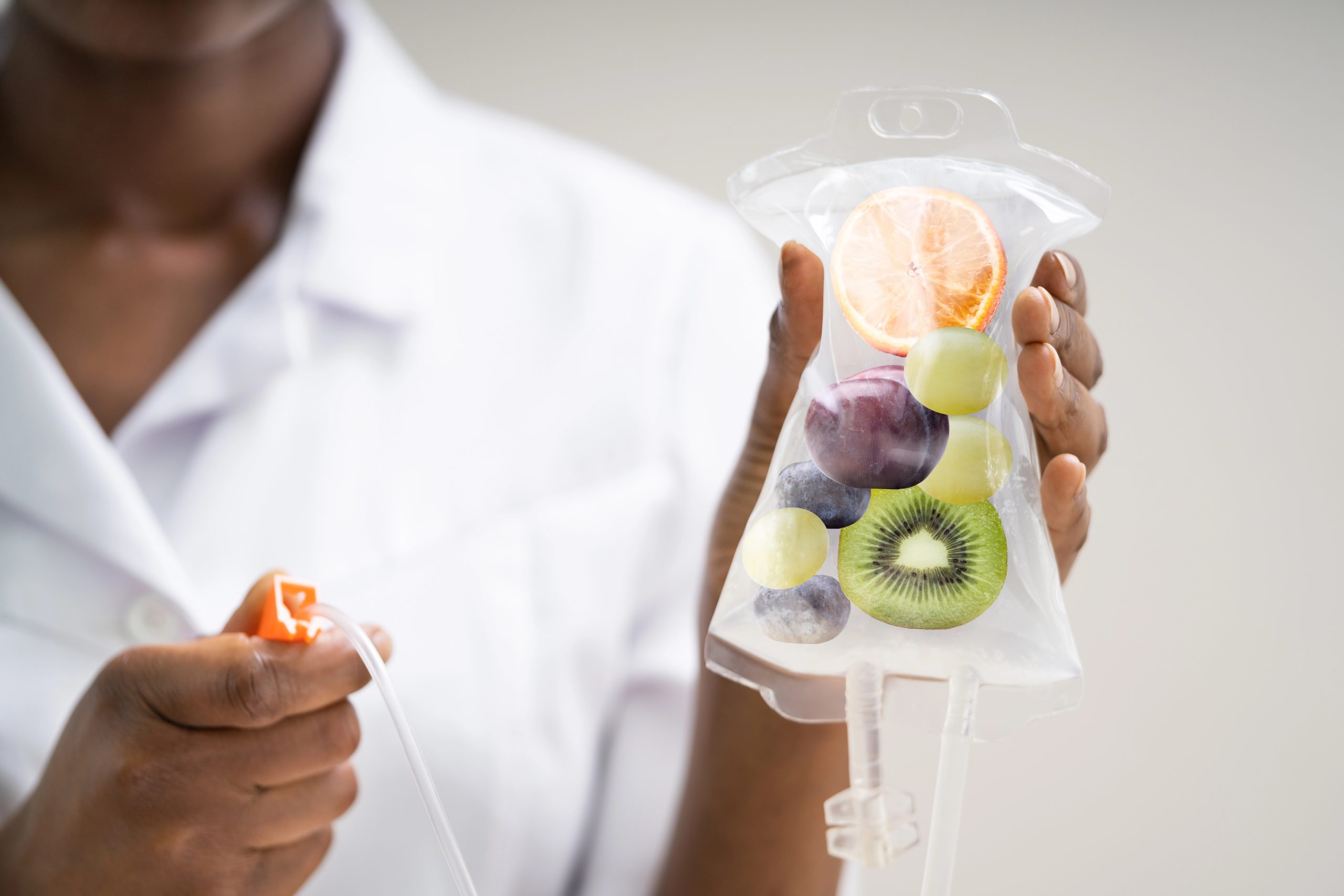Nutrient absorption is the process by which the body extracts vitamins, minerals, and other essential nutrients from food. This function largely takes place in the digestive system, where enzymes break down food into usable components that are absorbed through the gut lining into the bloodstream. When absorption is impaired, even a nutrient-rich diet may not provide the body with what it needs to function optimally.
Symptoms of poor nutrient absorption can include fatigue, unintentional weight loss, frequent illness, brittle nails, and difficulty concentrating. These signs may reflect deficiencies in iron, B12, magnesium, or other key nutrients. Left untreated, malabsorption can impact long-term health and quality of life, making early investigation important. In some parts of Australia, including Victoria, individuals with medically confirmed absorption issues may be referred for IV therapy in Melbourne as a way to bypass the gut and deliver nutrients directly into the bloodstream under clinical supervision.
How Different Parts of the Gut Absorb Nutrients
The digestive tract is not a uniform tube; it contains different regions, each with specialised roles in breaking down and absorbing nutrients. The stomach begins digestion, but most nutrient absorption occurs in the small intestine. For example, iron is primarily absorbed in the duodenum, while vitamin B12 is absorbed in the ileum with the help of intrinsic factor. Calcium and magnesium are mainly absorbed in the small intestine, while water and some vitamins (like vitamin K) are absorbed in the large intestine.
Damage to or surgical removal of parts of the digestive tract can lead to selective nutrient deficiencies. For instance, individuals who have undergone gastric bypass surgery may struggle with iron or B12 absorption. Similarly, inflammation from conditions like Crohn’s disease or coeliac disease can disrupt the absorption process at multiple points, even when dietary intake is adequate.
Common Causes of Nutrient Absorption Issues
A wide range of health conditions and lifestyle factors can interfere with how the body absorbs nutrients. These may include:
- Digestive disorders such as coeliac disease, Crohn’s disease, ulcerative colitis, or chronic diarrhoea
- Surgical changes to the digestive system, including gastric bypass or bowel resections
- Age-related changes, which can reduce stomach acid and enzyme production
- Medications that impact the digestive lining or microbiome, such as proton pump inhibitors or long-term antibiotics
- Chronic alcohol use and smoking, which can damage intestinal cells and alter gut function
In some cases, the underlying issue may not be immediately obvious, which is why clinical assessment and diagnostic testing are important.
Conventional Treatment Approaches for Malabsorption
Management of malabsorption depends on the underlying cause. In most cases, treatment begins with dietary modification and oral supplementation. These may include high-potency multivitamins, iron tablets, B12 lozenges, or mineral capsules tailored to the individual’s needs.
In addition to nutrient replacement, treatment may involve:
- Elimination diets to identify triggers (e.g. gluten in coeliac disease)
- Probiotics or digestive enzymes to support gut function
- Monitoring through blood tests to assess the effectiveness of interventions
- Managing the primary condition (e.g. inflammation, infection, or enzyme deficiency)
However, oral supplements are not always effective. Some people may not tolerate high-dose tablets due to gastrointestinal discomfort, while others may not absorb them adequately because of damage to the gut lining.
What Is IV Therapy and How Is It Used?
IV therapy refers to the intravenous administration of fluids and nutrients directly into the bloodstream. This method bypasses the digestive system entirely, which can be beneficial in certain clinical situations where absorption is impaired or when rapid replenishment is required.
In clinical settings, IV therapy may include the delivery of nutrients such as:
- Vitamin C
- B-complex vitamins
- Magnesium
- Iron
- Fluids with added electrolytes
By using a direct route into circulation, IV therapy offers a way to raise nutrient levels in the body without relying on the gut for absorption. It is important to note, however, that this approach is only appropriate when prescribed by a medical professional following a full assessment.
When IV Therapy Might Be Considered
IV nutrient therapy is not a first-line treatment for nutrient deficiency. It may be considered in specific cases where oral supplementation has proven ineffective or when rapid replenishment is needed due to clinical urgency. This includes:
- Individuals with diagnosed malabsorption who are not responding to oral treatments
- Patients recovering from gastrointestinal surgery or illness
- Those experiencing ongoing vomiting or diarrhoea that prevents oral intake
- People with blood test-confirmed deficiencies requiring immediate correction
All decisions to use IV therapy are made on a case-by-case basis. A medical consultation and appropriate testing are essential before considering this option.
Can IV Therapy Assist with Nutrient Absorption Challenges?
In cases of impaired gastrointestinal absorption, IV therapy may help by delivering nutrients directly into the bloodstream. This can allow the body to access essential vitamins and minerals that it would otherwise struggle to absorb through food or oral supplements. While IV therapy can assist in restoring nutritional status under medical supervision, it is not a cure for the underlying condition causing the malabsorption.
It is important to understand that the evidence supporting IV nutrient therapy varies by nutrient and clinical scenario. In some cases, it may be a short-term measure to restore balance while longer-term strategies, such as improving gut health, are implemented. IV therapy should never replace comprehensive medical care or be used without clear medical justification.
Why Gut Health Still Matters Even with IV Therapy
Even when IV therapy is used, long-term health depends on restoring or supporting gut function. The goal is to improve natural absorption capacity rather than rely on intravenous nutrients indefinitely. This means attention must also be paid to diet, hydration, gut microbiota, and stress management.
Key strategies to support gut health include:
- Consuming a diet rich in fibre, whole foods, and plant diversity
- Including prebiotic and probiotic foods (if appropriate)
- Staying well-hydrated and limiting alcohol
- Addressing any digestive symptoms with medical support
At Clarendon Medical, IV therapy is viewed as a potential adjunct, not a standalone solution.
Safety Considerations and Medical Oversight
IV therapy should only be administered under clinical supervision. Medical screening is essential to assess a person’s health status, nutrient levels, and suitability for this form of treatment. There are risks associated with IV therapy, such as infection at the injection site, allergic reactions, or imbalances if nutrients are given inappropriately.
Avoiding non-clinical providers is crucial. Self-directed or cosmetic use of IV therapy without a medical basis carries risks and may not provide meaningful health benefits. Ongoing follow-up and monitoring are part of safe, responsible treatment.
Clarendon Medical’s Approach to IV Nutrient Support
At Clarendon Medical, all patients are assessed thoroughly before IV therapy is considered. This includes a full review of health history, clinical symptoms, and laboratory results. The goal is to understand whether IV therapy is appropriate and, if so, to tailor it to the individual’s needs.
Our practitioners work collaboratively to address not only nutrient levels but the broader picture of digestive health, diet, and lifestyle. This approach ensures that IV support, when used, is part of a holistic and evidence-based care plan aimed at sustainable health outcomes.
FAQs
Q1: Who might benefit from IV nutrient therapy?
A1: Individuals with medically confirmed nutrient deficiencies and known absorption issues may be considered following a consultation and appropriate testing.
Q2: Does IV therapy replace the need for dietary changes?
A2: No. Nutrient-rich foods and a healthy gut are still essential. IV therapy may support nutrient levels, but does not substitute for a balanced diet.
Q3: Is IV therapy safe for everyone?
A3: Not necessarily. It depends on a person’s medical history, current medications, and clinical needs. A medical assessment is always required first.
Q4: How long does it take to feel any effects?
A4: This varies. Some people may notice changes quickly, while others may require multiple sessions and additional interventions.
Q5: Do I need a referral to access IV therapy?
A5: A medical consultation is always required before IV therapy can be provided, even without a referral from another doctor.
Q6: How often would IV therapy be needed for absorption issues?
A6: Frequency is determined on a case-by-case basis, depending on the severity of deficiency, treatment response, and overall care plan.
Q7: Is IV nutrient therapy expensive?
A7: Costs can vary depending on the type of infusion and frequency. This is discussed during your initial consultation.
Disclaimer
This content is for general informational purposes only and does not constitute medical advice. IV therapy and any other medical treatments should only be undertaken following consultation with a qualified healthcare professional. Individual results may vary.



